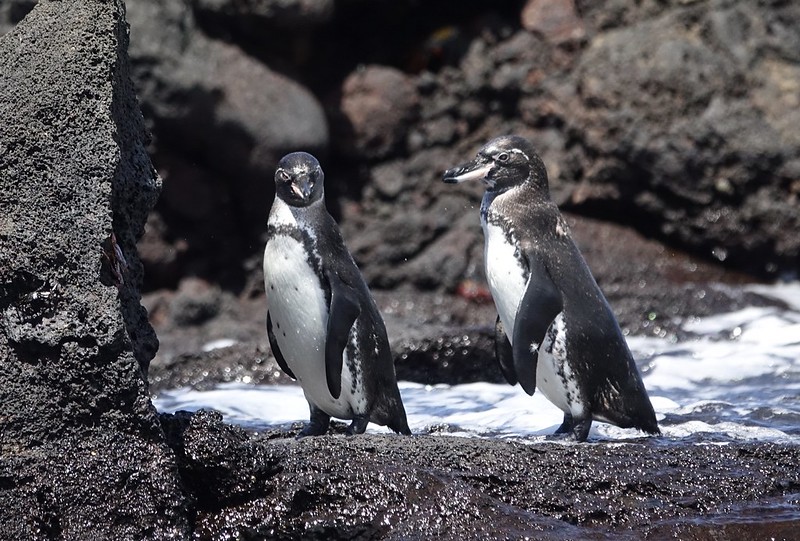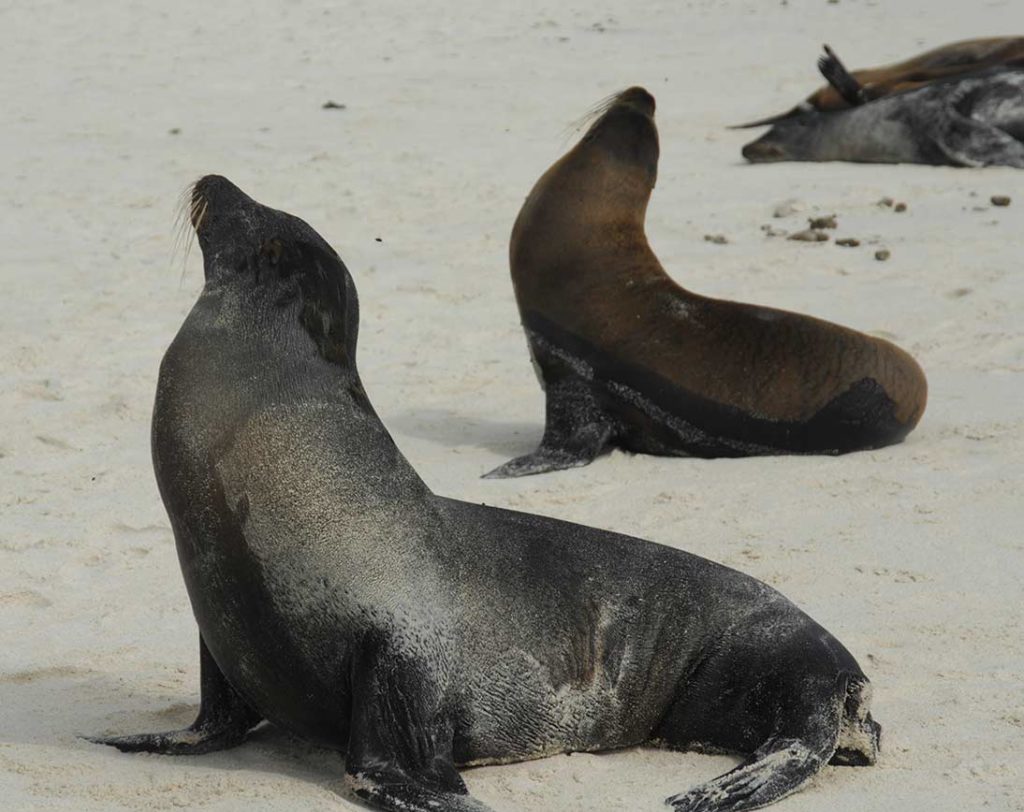More information about Santiago
The largest and longest lava flow is found in Sullivan Bay. This island is geologically one of the most amazing and beautiful formations. The huge basaltic landscape is smooth and unbroken with undulations and nods created by the fluid lava which created the sculpture. It is situated in the middle west archipelago, and is made by two overlapping volcanoes. It is the archipelago's 4 largest.
It's an unpopulated island.
In Puerto Egasexplore the deep pools and caves made from lava shoreline. These are home to playful Galapagos fur Seals and a variety of migrant and resident bird species.
Sombrero Chino is a stunning snorkel. It's a channel of shallow-water water that allows for swimming, a nursery of thousands marine species, and a small colony penguins.

Conservation. One thing to note today on this island is that Charles Darwin's diary did not mention the existence of thousands of land-iguanas. Introduced species, especially rodents and goats, have made them disappear completely. This island is the largest on the planet where introduced species were eradicated. The island's inhabitants are now in danger of extinction. We see them more and more during our visits.
Charles Darwin Journey to Santiago. Darwin spent the longest time on this island. He knew that the islands were more important and larger than they appeared when he arrived. So he spent 2 weeks walking the entire island. This is where Darwin first saw the differences between tortoises of different islands. They were different sizes and shapes.
Locator Map

Santiago Island Visitors Sites
Buccaneer's Cove & Espumilla Beach
This amazing spot is home to playful sea lions and fur seals. The erosion of salty waves and wind has resulted in the formations that are now unique. Visitors love Espumilla beach, a popular white-sandy beach in James Bay.
Espumilla, a traditional Ecuadorian dessert that is made from fruit and eggs, is similar to a foamy dessert. This consistency can also be used to describe the foamy waves at this site. Mangroves are found here, as well as a small Palo Santo Forest that leads to salty lagoons where wading birds like flamingoes can be found.
Marine turtles can also be found nesting in the dunes. Clear waters make it a great spot to snorkel and see rays and fish.
Highlights - Beautiful landscapes, fur seal colonies, sea lion colonies and herons. The vegetation will be visible in all climate zones from arid and humid, although they have been severely affected by intensive foraging by introduced sheep. They are now extinct. It is possible to spot and observe hunting herons in the surrounding area, including Yellow-crowned Night Herons and Great Blue Herons. The sight of marine Iguanas enjoying the low tide algae beds, along with other wading birds and crimps on red Sally Light-foot Crabs, will be a delight for visitors.Sullivan Bay
This site, located in the southeast corner of Santiago Island, is of great geologic importance. It features large lava flows that were formed in the last quarter century. This area is covered in Pahoelava flow ( Pahoewich translates to "easy to walk"); this type of lava, which is uncommon to the rest of world, is common to the Galapagos Islands volcanoes and Hawaii's volcanic origin.
The path of lava flows can be seen as well as various igneous rock structures that have been formed at different rates, temperatures and pressures. You can also see pioneer plants and "hornitos", tiny ovens that form when hot lava bubbles escape to form mini-volcanoes.
Some trees have molds at 492 feet (150m) from where the path begins. The crust details indicate that these were trees that grew in small crevices in which soil and moisture can accumulate in sufficient quantities to allow them to grow.
You can snorkel and swim with sea lions from two small coralline beaches after exploring the lava flow.
Highlights This is the ideal place to feel and see the volcanic origins of the Galapagos
Egas Port
Egas Port is named after Jorge Egas, an entrepreneur who visited the island in 1930s and established a salt mine at foothill of the "Sugarloaf" Volcano. Charles Darwin and HMS Beagle visited the site in 1835. They described the activities of a group from Spain that salt tortoise meat using salt taken from the area.
The trail's first section is made up of volcanic ash (a cone-shaped tuff), while the second half is partly uneven terrain and is composed of volcanic basaltic rocks that lingers on the shoreline.
You will also see a variety of bird species along the shore such as blue-footed and night herons, pelicans, lava herons and yellow-crowned night herons (locally huaques), semipalmated plovers. Willets, yellow warblers and finches. The highly territorial American oystercatcher, which lives in pairs, can often occupy large areas of the shoreline. You can also find large colonies of marine Iguanas on volcanic rocks, as well as sally light-foot crabs.

The Salt Mines can be visited on a 4 mi (8 km) round trip. It's a salty lagoon located within a crater.